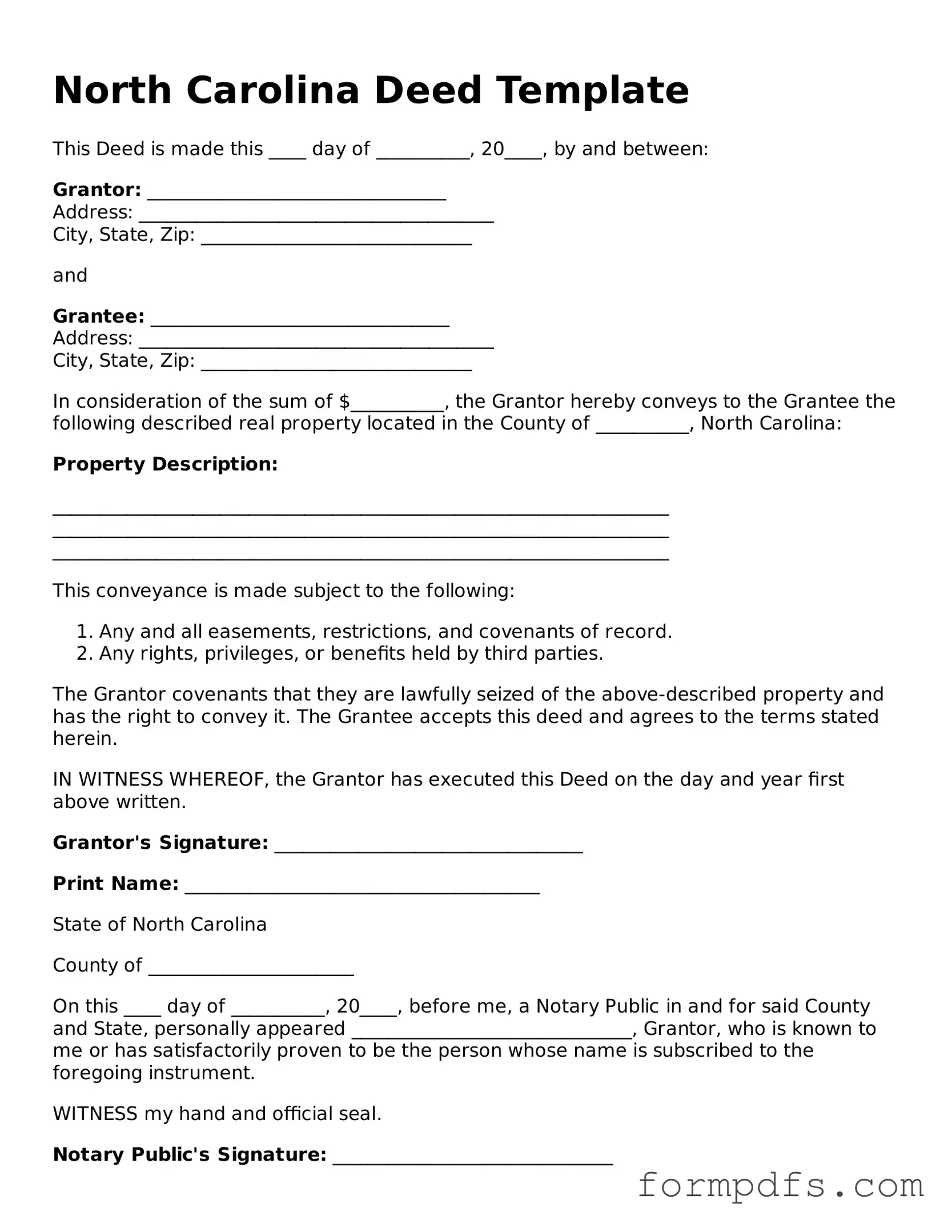What is a North Carolina Deed form?
A North Carolina Deed form is a legal document used to transfer ownership of real property from one party to another. It serves as proof of the transfer and outlines the rights and responsibilities associated with the property. There are various types of deeds, including warranty deeds and quitclaim deeds, each serving different purposes in the transfer process.
What information is required on a North Carolina Deed form?
To complete a North Carolina Deed form, several key pieces of information must be included. This includes the names of the grantor (the seller) and grantee (the buyer), a legal description of the property, the date of the transfer, and the signature of the grantor. Additionally, it’s important to note any consideration, or payment, exchanged for the property.
Do I need a notary for a North Carolina Deed?
Yes, a notary public must witness the signing of the North Carolina Deed form. The notary's role is to verify the identities of the parties involved and to ensure that the deed is executed willingly and without coercion. After notarization, the deed must be recorded with the local county register of deeds to be legally effective.
How do I record a North Carolina Deed?
To record a North Carolina Deed, you must take the completed and notarized deed to the local county register of deeds office. There, you will submit the document along with any required fees. Recording the deed makes the transfer public and protects the new owner's rights to the property.
What is the difference between a warranty deed and a quitclaim deed?
A warranty deed provides the grantee with a guarantee that the grantor holds clear title to the property and has the right to sell it. It offers protection against future claims. In contrast, a quitclaim deed transfers whatever interest the grantor has in the property without any guarantees. This means the grantee receives no assurances about the title's status.
Can I use a North Carolina Deed form for transferring property to a family member?
Absolutely! A North Carolina Deed form can be used to transfer property to a family member. Whether it’s a gift or a sale, the deed should clearly outline the relationship between the parties and any terms of the transfer. If no money changes hands, it’s still advisable to document the transaction to avoid any future disputes.
What happens if a North Carolina Deed is not recorded?
If a North Carolina Deed is not recorded, the transfer of ownership may not be legally recognized against third parties. This means that if someone else claims an interest in the property or if the grantor sells it again, the unrecorded deed may not protect the grantee’s rights. Recording the deed is crucial to ensure that the new owner’s claim to the property is secure.
